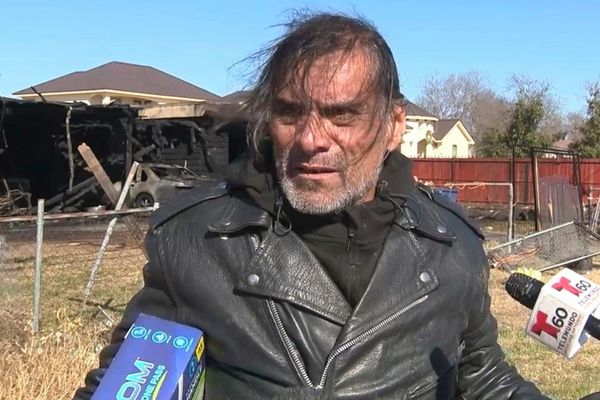
Wayne Couzens should never have been a police officer and three separate forces “could and should have” stopped him, a damning report by Lady Elish Angiolini has found.
The 51-year-old former firearms officer’s history of alleged sexual offending and predilection for violent and extreme pornography dated back to 1995, it said. Couzens allegedly sexually assaulted a child and attempted to kidnap a woman at knife-point in the years before he abducted, raped and murdered Sarah Everard on 3 March 2021.
Here are the main points from the 347-page report:
‘Major red flags and missed opportunities’
Couzens was reported to police eight times for indecent exposure before Everard’s murder, the report found. It said there had been “a lamentable and repeated failure to deal, in a reasonable and professional manner, with the several allegations reported to different police forces by a number of people”.
The earliest report was on 21 November 2008. The inquiry said that while there was “limited evidence available” in that case, some of the others were capable of leading to Couzens’ arrest and referral for prosecution at the time.
It said there was no doubt that the failure to investigate a June 2015 report of alleged indecent exposure in Kent was “a missed opportunity to disrupt or even prevent further offending by Couzens”. The report said officers in that case and others displayed “apathy and disinterest”.
In 2004, Couzens allegedly exposed himself to a teenage girl and masturbated while driving past her in south London. The offence was not reported at the time but the woman later came forward when she recognised Couzens in the media.
‘Repeated failures in recruitment and vetting’
Police repeatedly failed to spot warning signs about Couzens’ unsuitability for office, the report found. It said Couzens’ alleged sexual offending and his “often poorly and chaotically managed personal debt” over many years were red flags.
It said that while Couzens sought to deliberately mask his financial situation, he entered into an individual voluntary arrangement (IVA) in 2007, a year after he joined Kent police as a special constable.
In May 2008 he failed an application to become a regular officer for Kent, possibly due to the IVA, but was kept on as a special, with the same powers as a regular officer.
When Couzens joined the Civil Nuclear constabulary (CNC) in 2011, an outside force vetted him and recommended that he should not be recruited due to the IVA, but this was ignored.
Couzens committed two motoring offences in 2013 and 2014 while working as a firearms officer with the CNC, and was reported missing for several hours after an apparent evening trip to the gym in Folkestone in June 2013.
The inquiry found that at about 3am, just over an hour after the missing person report was created, the case was closed because Couzens arrived home. He claimed he had crashed a hire car.
The inquiry said: “Couzens could have been driving around looking for a victim, in the same way as he did almost eight years later on the evening he abducted Sarah Everard and on other dates in the lead-up to his crimes.”
It said the missing person report was a red flag about Couzens’ suitability to be a police officer.
History of sexual offending
Couzens is alleged to have committed a “very serious sexual assault against a child barely into her teens” before he joined Kent police as a special constable in 2006.
He allegedly tried to kidnap a woman at knife-point in north London in 1995. The incident was reported to police the same day but the perpetrator was never caught. Couzens was named by the complainant as a suspect after his arrest.
After Everard’s murder, two women accused Couzens of rape. The first allegedly took place during a singles event linked to a dating website at a bar in east London between November 2006 and January 2007. The second allegedly occurred below a bridge in London in October 2019.
Couzens was further accused of sexually assaulting a man, who was in drag and wearing a blond wig, at a bar in Kent in summer 2019. The complainant claimed a man struck up a conversation and “touched him inappropriately”. It led to a confrontation before the man told the complainant he was a police officer and invited him outside to perform a sexual act. A report of this incident was made after Couzens’ arrest.
Treatment of women
In early spring 2003, Couzens is said to have blocked a woman’s path and demanded her telephone number at a Territorial Army event. The woman, who came forward to the inquiry after Couzens’ arrest, said he was “intimidating” and made her feel “deeply uncomfortable”.
The inquiry also heard of three alleged incidents of Couzens’ inappropriate behaviour when he was a volunteer section officer in Kent Special Constabulary. The incidents, which were not reported at the time, are alleged to have occurred when Couzens was off duty, at a time when he was in his mid to late 30s.
The first alleged incident involved Couzens leaving six photographs of his semi-erect, as well as erect, penis on a young woman’s phone. When confronted, Couzens “laughed it off and said it was nothing”.
The second alleged incident occurred when Couzens applied a plaster to the wounded leg of a young woman. The woman was made to feel “extremely uncomfortable” when Couzens lifted her skirt “much higher than it needed to be” and proceeded to squeeze her knee “very slightly”.
Couzens is also alleged to have sexually assaulted a young woman by putting his hand underneath the full skirt of her dress and touching her over her underwear, while in a car on the way home from a social event.
On 4 December 2020, while working for the Metropolitan police, Couzens allegedly sent an unsolicited photograph of his erect penis to a woman selling clothing online.
Violent and extreme pornography
The inquiry found evidence that Couzens had a long-term predilection for violent and extreme pornography and that he had played videos featuring such acts to friends and colleagues.
After Couzens’ arrest, pornography was found across all his electronic devices. One contained a film referencing a rape in which an impotent police officer murdered a woman after she supposedly taunted him. The file had been deleted and Couzens denied seeing it.
Forensic analysis also revealed 19 unlawful indecent images of children across three of his devices. He denied having ever downloaded or viewed any indecent images of children.







